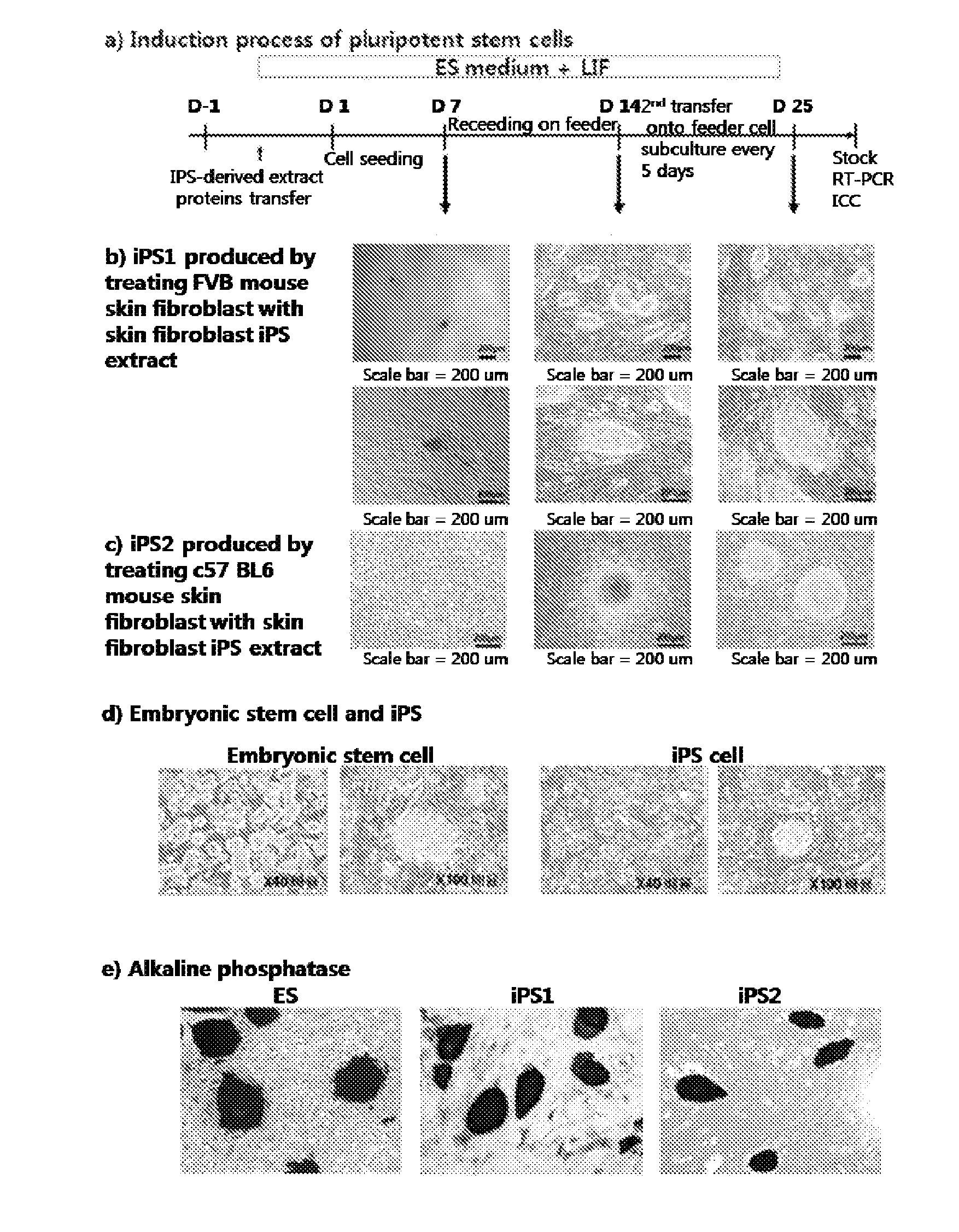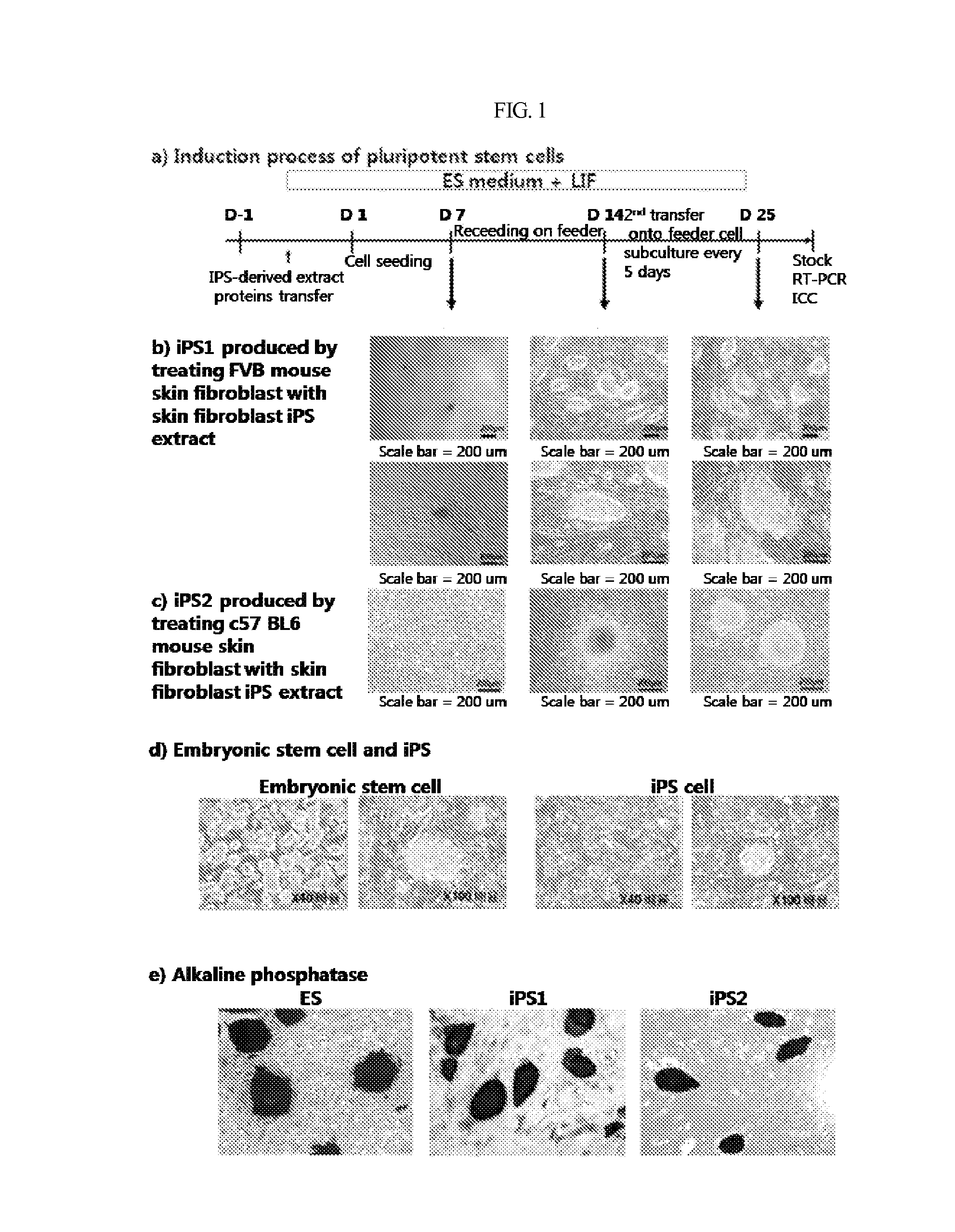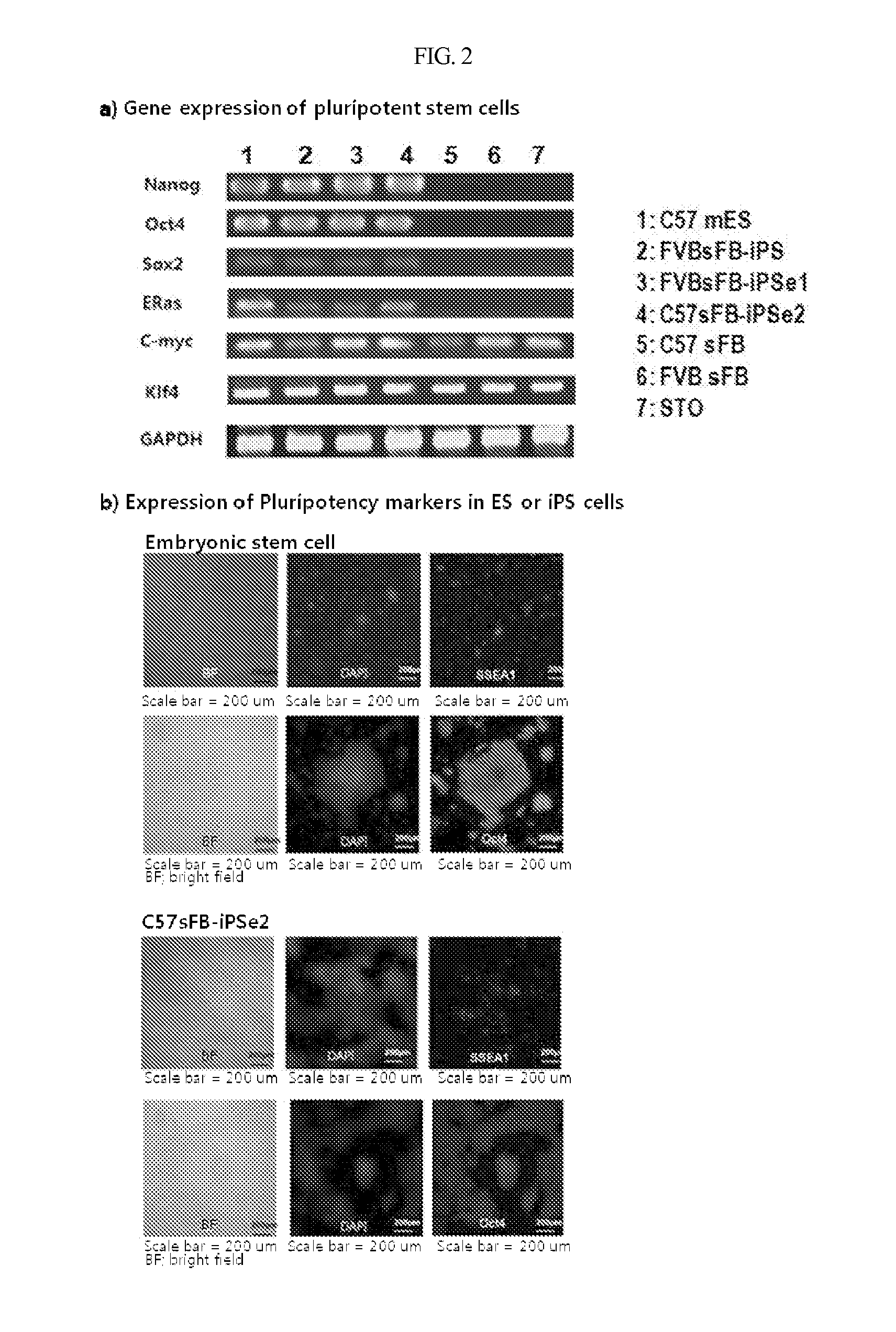Method for producing induced pluripotent stem cells with high efficiency and induced poluripotent stem cells prouced thereby
a technology of induced pluripotent stem cells and poluripotent stem cells, which is applied in the direction of injected cells, drug compositions, cardiovascular disorders, etc., can solve the problems of raising ethical issues, scnt requires a large amount of oocytes, and transplant rejection, so as to achieve high yield, maintain high level of safety and efficiency, and generate very easily
- Summary
- Abstract
- Description
- Claims
- Application Information
AI Technical Summary
Benefits of technology
Problems solved by technology
Method used
Image
Examples
example 1
Induction of Customized Pluripotent Stem Cell from Adult Somatic Cells
(1) Preparation of iPS Extract
Mouse fibroblast derived iPS (FVBsFB-iPS) generated with a C57 mouse embryonic stem cell (C57 mES) extract was harvested by treatment with 0.25% trypsin-EDTA for 3 min, washed with phosphate-buffered saline (PBS), and collected by centrifugation. The cell pellet thus obtained was resuspended in 1 mL of cold cell lysis buffer (100 mM HEPES, pH 8.2, 50 mM NaCl, 5 mM MgCl2, 1 mM dithiothreitol, and protease inhibitor), and put on ice for 30˜45 min, with vortexing once every five minutes. The cells were homogenized by 3˜5 passages through a syringe equipped with a 20-gage needle, followed by centrifugation at 15,000 rpm at 4° C. for 30 min. The supernatant thus obtained was transferred to a new tube which was then stored at −80° C. until use. The protein concentration was found to range from 20 to 30 mg / ml.
(2) Permeabilization of Adult Somatic Cells Membrane
In the present invention, C57 B...
example 2
Gene and Protein Characterization of Customized Pluripotent Stem Cells
After being detached by treatment with trypsin-EDTA, the cells of Example 1 were incubated for 30 min in a culture dish in an incubator. While the feeder cells adhered again to the dish, the undifferentiated pluripotent stem cells remained floating and harvested. Total RNA was isolated using a TRIzol reagent (Invitrogen). RT-PCR was performed to produce cDNA, followed by PCR with primers specific for Nanog, Oct4, Sox-2, E-Ras, Klf-4, c-Myc, and a control gene GAPDH (glyceraldehyde 3-phosphate dehydrogenase). All of the genes Nanog, Oct4, Sox-2 and E-Ras are characteristic of embryonic stem cells while Klf-4 and c-Myc are non-specific genes found in both embryonic stem cells and adult somatic cells. The PCR products were analyzed by agarose gel electrophoresis. The results are given in FIG. 2A.
As seen in FIG. 2A, Nanog, Oct4, Sox-2, and E-Ras, which are hallmark genes of embryonic stem c...
example 3
Analysis of Differentiation Potency of Customized Prulipotent Stem Cells
The cells reprogrammed according to the method of the present invention were examined to determine whether they had the same pluripotency as that of embryonic stem cells.
(1) In Vivo Induction of Differentiation
To analyze in vivo potency of the cells reprogrammed by the method of the present invention, the undifferentiated cell colonies grown on the feeder cells were detached by treatment with trypsin-EDTA on Day 18 (D25) after culturing on the feeder cell layer and then incubated for 30 min in a culture dish in an incubator. The undifferentiated pluripotent stem cells which remained still floating were harvested and subcutaneously injected at a dose of 1×107 cells into severe combined immune deficiency (SCID) mice. Four weeks after the injection, teratoma thus formed was excised, fixed with 4% paraformaldehyde (PFA) and embedded in paraffin. This was sectioned into 10 μm-thick slices which were stained with hema...
PUM
| Property | Measurement | Unit |
|---|---|---|
| concentration | aaaaa | aaaaa |
| concentration | aaaaa | aaaaa |
| concentration | aaaaa | aaaaa |
Abstract
Description
Claims
Application Information
 Login to View More
Login to View More - R&D
- Intellectual Property
- Life Sciences
- Materials
- Tech Scout
- Unparalleled Data Quality
- Higher Quality Content
- 60% Fewer Hallucinations
Browse by: Latest US Patents, China's latest patents, Technical Efficacy Thesaurus, Application Domain, Technology Topic, Popular Technical Reports.
© 2025 PatSnap. All rights reserved.Legal|Privacy policy|Modern Slavery Act Transparency Statement|Sitemap|About US| Contact US: help@patsnap.com



